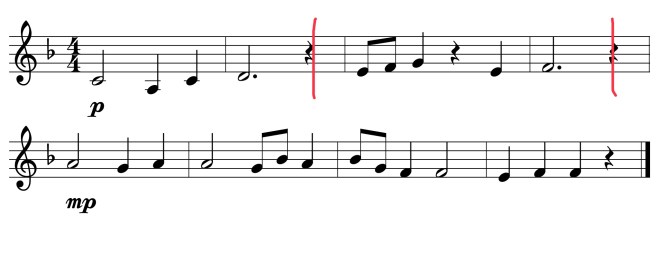You just started playing an instrument and your teacher is constantly telling you to practice. The problem is no one has ever told you how to practice!
You go home play your instrument for the 20 minutes your teacher asked. You play all of the lines you are working on in class but you are still messing up. Have you ever thought about how you are practicing? What exactly are you supposed to be working on? Does it ever get so frustrating that you just want to quit?
Its going to be ok! Take a deep breath, you just need to know how to practice smarter. Follow these seven steps and soon you will be able to learn any music you want!
Break the music into sections
If you are just starting out, you probably are working out of a method book so start by breaking the line into sections. Are there any breath marks? If so, put your break there. Rests are also great places to put a break.

Figure out the rhythm and practice counting it
Count through the first section. Are there any rhythms in the music that you don’t know how to count? Sit down with a pencil and figure the rhythms out. Practice counting them with a metronome. If you don’t have a metronome, you can use metronomeonline.com or any of the free metronome apps available for your device.
Figure out the notes
Next, figure out the note names and fingerings. If there is a note you don’t know, look it up. You can find a fingering chart in either the front or back of most band method books and if your’s doesn’t have one, a quick google search will quickly find a fingering chart for your instrument. You can find woodwind fingerings here and brass fingerings here.
Put the rhythms and notes together (say it then play it)
Once you have figured out the counting and notes, practice putting them together. Finger through the passage saying the notes out loud in rhythm. Are you still using your metronome? You should be!
Make sure you are using the correct articulation and putting in all of the dynamics
Articulation and dynamics are the elements that turn notes into music. Be sure not to ignore them. You wouldn’t move into your house before it is painted would you? The articulation and dynamics are an important part of the music.
Put the sections together
The sections of music that you have been practicing are like a puzzle, you have to put them together in order to see the image. Start snapping the sections of music together slowly just like you would the pieces of a puzzle.
Work on speeding it up
Once you can play the line slowly with a metronome (you are still using it aren’t you) start speeding it up by increasing your metronome 5 clicks at a time.

Final tips
Hopefully by now you have a good plan for how to practice but a few things to remember are:
- Set aside time to practice – you are more likely to practice if you schedule it. I suggest practicing as soon as you get home from school but if that doesn’t fly with your parents, try to practice at the same time every day.
- Remember, its ok to make mistakes – you are learning a new skill…you can even think of music as a new language you are learning. You are going to make mistakes along the way and that’s ok! The important thing to remember is to have fun and keep trying.

